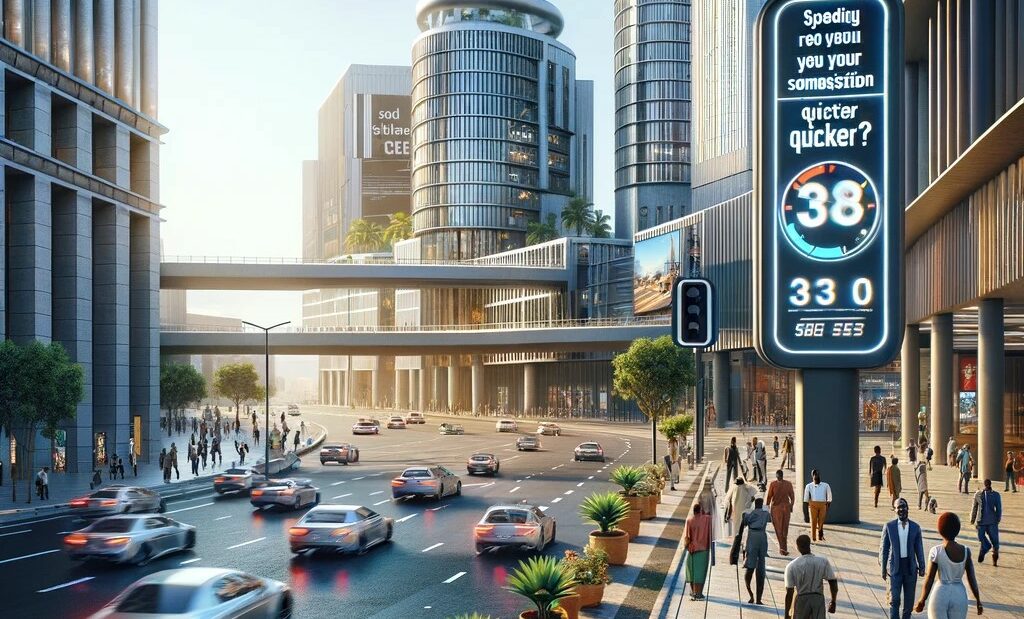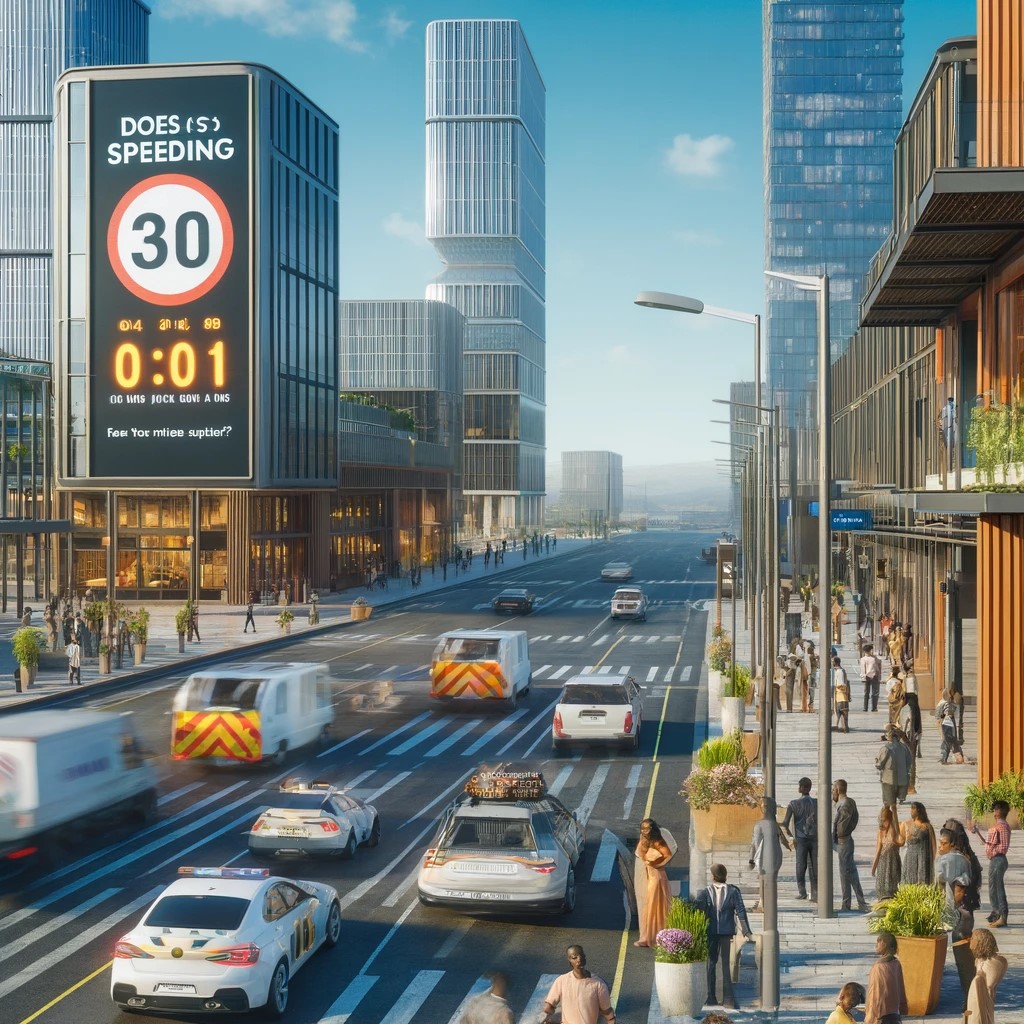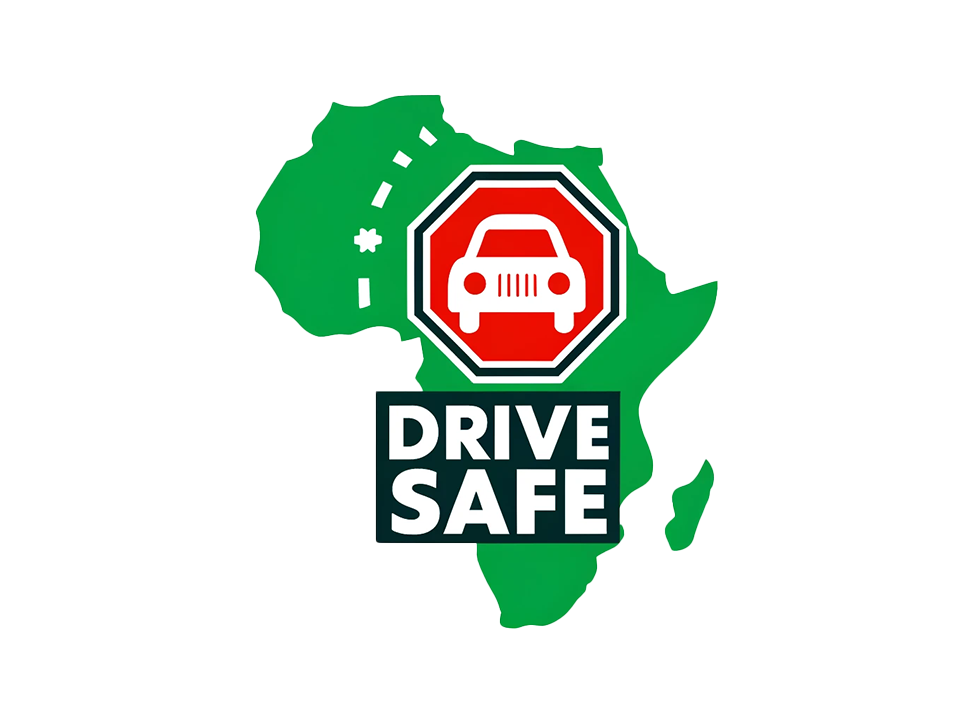
Does Speeding Really Help You Reach Your Destination Quicker?
I. Introduction
For many drivers, the temptation to press the accelerator a little harder when running late or rushing to meet a deadline is almost irresistible. The common belief is that speeding will shave off significant minutes from travel time, helping to reach destinations quicker. This idea is perpetuated by a mix of impatience, overestimation of time savings, and often, a misunderstanding of how speed affects travel duration overall.
However, this belief prompts a critical examination: Do the marginal time savings from speeding truly justify the increased risks involved? While the clock might suggest a few minutes gained, the broader implications of speeding — including higher risks of accidents, legal penalties, and increased fuel consumption — paint a more complex picture.
In this discussion, we will delve into whether speeding is an effective strategy for reducing travel times or if it is a risky behavior with minimal actual benefit. By dissecting myths and analyzing the true costs associated with speeding, we aim to provide a balanced perspective that encourages drivers to rethink their habits for safer roads.

II. Understanding Speeding: Myths vs. Truths
Speeding is often justified with several myths that many drivers believe to be true. Below, we dispel some of the common myths surrounding speeding, providing a clearer understanding of the actual implications of this behavior.
Myth 1: Speeding Saves a Lot of Time
Many drivers assume that faster speeds directly translate to significantly shorter travel times. However, the actual time saved by speeding is often less impressive than assumed. Let’s look at some basic calculations:
- Scenario: Driving a distance of 30 kilometers.
- Speed Limit: 60 km/h (travel time = 30 minutes).
- Speeding: 75 km/h (travel time = 24 minutes).
In this scenario, speeding 15 km/h above the speed limit saves only 6 minutes on a 30 km trip. The time savings diminish further when accounting for traffic lights, congestion, and other factors that prevent maintaining a constant speed. Therefore, the actual benefit of speeding may not be as significant as many drivers think, especially in urban settings.
Myth 2: Speeding is Safe if You’re a Good Driver
A common misconception is that good driving skills can compensate for the risks of speeding. However, safety concerns associated with speeding are not merely about driver skill but also about the basic laws of physics:
- Reaction Time: Speeding reduces the available reaction time a driver has to respond to unexpected events. At higher speeds, it takes longer to stop the vehicle effectively after recognizing a hazard.
- Vehicle Control: At increased speeds, the effectiveness of safety mechanisms like braking and steering sharply decreases. High-speed collisions are more likely to result in loss of vehicle control, making accidents more severe.
These factors show that even skilled drivers are at a higher risk when they choose to speed, as their ability to react and control the vehicle is compromised.
Myth 3: Speed Limits are Arbitrarily Set
Another widespread myth is that speed limits are set without any logical basis, leading some drivers to disregard them. In reality, speed limits are carefully calculated and take into account several critical factors:
- Road Type: Different roads are designed for different speeds based on their engineering. For example, tight curves or narrow lanes necessitate lower speeds for safety.
- Traffic Volume: Roads with higher traffic density have lower speed limits to reduce the risk of accidents in congested conditions.
- Accident History: Areas with a history of traffic accidents might see reduced speed limits to prevent further incidents.
- Pedestrian Activity: In areas with high pedestrian traffic, such as school zones and residential areas, speed limits are significantly lower to protect walkers and cyclists.
Understanding that speed limits are set based on thorough research and considerations of road safety can help drivers see these limits not as hindrances but as necessary guidelines to protect everyone on the road.
By debunking these myths, we aim to highlight the truth about speeding: the time saved is minimal, the risks are high, and speed limits are essential for road safety. This perspective encourages drivers to adhere to posted speed limits and drive responsibly.
III. The Real Costs of Speeding
While speeding might seem like a quick solution for saving time, it comes with significant costs that far outweigh any marginal gains. Here, we explore the real consequences of speeding in terms of accident risks, legal and financial repercussions, and environmental impacts.
Increased Accident Risk
Speeding dramatically increases both the likelihood and severity of accidents. Here are some key statistics and insights:
- Likelihood of Accidents: Studies show that with every 1% increase in speed, the likelihood of an accident increases by approximately 4% .
- Severity of Accidents: Higher speeds result in more severe collisions. At 60 km/h, the risk of death for a pedestrian struck by a car is about 80%, whereas at 50 km/h, this risk drops to around 40% .
- Reaction Time and Stopping Distance: At higher speeds, drivers have less time to react to hazards. For example, at 100 km/h, it takes about 70 meters to stop, whereas at 50 km/h, it takes about 25 meters. This substantial difference can be the line between a near-miss and a fatal crash.
These statistics underline the severe risks associated with speeding, highlighting why maintaining safe speeds is crucial for reducing road accidents.
Legal and Financial Consequences
Speeding doesn’t only endanger lives; it also carries significant legal and financial repercussions:
- Fines: Speeding tickets can range from moderate to hefty fines, depending on the extent of the speed violation and the jurisdiction.
- License Points: Accumulating points on your license for speeding offenses can lead to higher penalties, suspension, or revocation of driving privileges.
- Increased Insurance Rates: Speeding violations often result in increased insurance premiums. Insurers view speeding as a high-risk behavior, which means higher costs for the driver.
- Imprisonment: In severe cases, such as reckless driving resulting in injury or death, drivers can face imprisonment, adding a severe personal and social cost to speeding.
These consequences highlight that speeding is not only dangerous but also financially and legally burdensome, making it a lose-lose situation for drivers.
Fuel Efficiency and Environmental Impact
Speeding also has a negative impact on fuel efficiency and the environment:
- Increased Fuel Consumption: Vehicles consume more fuel at higher speeds due to increased engine workload and aerodynamic drag. For instance, driving at 100 km/h instead of 80 km/h can increase fuel consumption by up to 15% .
- Greater Emissions: Higher fuel consumption leads to increased emissions of pollutants such as carbon dioxide (CO2), contributing to environmental degradation and climate change. Speeding thus not only affects your wallet but also the planet.
By understanding these impacts, drivers can see that maintaining reasonable speeds is beneficial not only for safety but also for financial and environmental reasons.
The real costs of speeding extend far beyond the perceived benefits of saving a few minutes. The increased risk of accidents, significant legal and financial penalties, and the negative impact on fuel efficiency and the environment all contribute to a compelling case against speeding. By choosing to drive within speed limits, drivers can protect themselves, their passengers, and the broader community, while also saving money and reducing their environmental footprint.
IV. Marginal Gains vs. Significant Risks of Speeding
Analyzing Time Saved
When considering the benefits of speeding, the most commonly cited advantage is the perceived reduction in travel time. However, a closer look at the actual time savings reveals that these benefits are often marginal and do not justify the increased dangers.
Let’s revisit the earlier example:
- Scenario: Driving a distance of 30 kilometers.
- Speed Limit: 60 km/h (travel time = 30 minutes).
- Speeding: 75 km/h (travel time = 24 minutes).
In this scenario, speeding 15 km/h above the speed limit saves only 6 minutes on a 30 km trip. Over shorter distances, the time saved is even less significant. For instance:
- 10 km trip: At 60 km/h, it takes 10 minutes. At 75 km/h, it takes 8 minutes. The time saved is just 2 minutes.
These small time savings are often further reduced by factors such as traffic lights, stop signs, and varying traffic conditions, which prevent maintaining high speeds consistently. Therefore, the actual benefit of speeding in terms of time saved is minimal.
Risk Assessment
The minimal time savings from speeding must be weighed against the substantial risks involved. Here’s a comprehensive evaluation of these risks:
- Personal Safety Risks
- Increased Accident Likelihood: Higher speeds significantly increase the chance of being involved in an accident. The faster you go, the less time you have to react to unforeseen hazards, and the harder it is to control your vehicle.
- Severity of Accidents: Accidents at higher speeds are more likely to result in severe injuries or fatalities. The impact force increases exponentially with speed, making high-speed collisions far more dangerous.
- Financial Costs
- Legal Penalties: Speeding tickets can be costly, with fines increasing for higher speeds and repeated offenses. In some areas, extreme speeding can lead to hefty fines and even court appearances.
- Insurance Premiums: Speeding violations typically result in higher insurance premiums. Insurance companies consider speeding a high-risk behavior, and repeated offenses can lead to substantial increases in costs.
- Vehicle Wear and Tear: Driving at higher speeds increases wear and tear on your vehicle, leading to more frequent maintenance and higher repair costs.
- Ethical Considerations
- Responsibility to Others: Speeding endangers not only the driver but also passengers, pedestrians, and other road users. Ethical driving involves respecting the safety and well-being of others on the road.
- Environmental Impact: Speeding contributes to higher fuel consumption and greater emissions, which negatively impact the environment. Responsible driving practices help reduce your carbon footprint and contribute to a healthier planet.
Balancing Gains and Risks
When balancing the minimal time savings against these significant risks, it becomes clear that speeding is not a worthwhile trade-off. The potential dangers to personal safety, financial health, and ethical responsibility far outweigh the minor benefits of arriving a few minutes earlier.
Speeding offers minimal gains in terms of time saved but comes with substantial risks that can have far-reaching consequences. By choosing to adhere to speed limits, drivers not only ensure their own safety but also contribute to safer roads for everyone. The marginal gains from speeding do not deserve the increased risks, making responsible driving the clear choice for a safer and more sustainable future.
Let’s drive safe, live safe, and make our roads safer for everyone.
V. Alternative Ways to Save Time While Traveling
While speeding may seem like the quickest way to reduce travel time, there are several safer and more effective strategies that can help you reach your destination promptly without the associated risks. Here are some practical alternatives to consider:
Planning Ahead and Leaving Earlier
One of the simplest and most effective ways to avoid the need for speeding is to plan your journey in advance and leave with plenty of time to spare. Here’s how better planning can help:
- Calculate Travel Time: Use online maps or navigation apps to estimate how long your trip will take, considering the current traffic conditions.
- Factor in Delays: Allow extra time for potential delays such as traffic jams, construction, or inclement weather.
- Prepare the Night Before: Get everything ready the night before your trip, such as packing your bag, checking your vehicle, and planning your route. This reduces morning stress and ensures you’re not rushed.
By leaving a bit earlier, you give yourself a buffer that eliminates the need to speed and ensures a more relaxed and safer drive.
Using Technology
Technology offers several tools that can help you save time on the road without resorting to speeding:
- Traffic Apps: Use apps like Google Maps, Waze, or local traffic monitoring apps to get real-time updates on traffic conditions. These apps can suggest alternative routes to avoid congestion and delays.
- Navigation Systems: Modern GPS systems often include features such as live traffic updates, route optimization, and estimated arrival times. Use these features to plan the most efficient route.
- Calendar Alerts: Set reminders and alerts on your phone’s calendar to notify you when it’s time to leave for your destination. These reminders can help ensure you depart on time and stay on schedule.
Leveraging technology can make your travel more efficient and reduce the likelihood of running late, thus eliminating the need to speed.
Improving Driving Habits
Adopting better driving habits can also help you save time and drive more efficiently:
- Smooth Acceleration and Braking: Accelerate smoothly and brake gently to maintain a steady speed and avoid wasting fuel. This habit not only saves fuel but also reduces travel time by maintaining a more consistent speed.
- Anticipate Traffic Flow: Look ahead and anticipate traffic lights, stop signs, and the behavior of other drivers. By doing so, you can adjust your speed early and avoid unnecessary stops and starts.
- Maintain Safe Following Distances: Keeping a safe distance from the vehicle in front allows you to react more calmly to sudden changes in traffic, reducing the need for abrupt braking or acceleration.
- Avoid Peak Hours: If possible, plan your trips during off-peak hours to avoid heavy traffic. Less congestion means a smoother and quicker journey.
These driving habits contribute to a safer and more efficient travel experience, helping you arrive at your destination on time without the need for speeding.
Speeding is not the only way to save time while traveling. By planning ahead, utilizing technology, and improving driving habits, you can achieve timely arrivals without compromising safety. These alternative strategies not only help you avoid the risks and costs associated with speeding but also contribute to a more relaxed and enjoyable driving experience.
Remember, the goal is not just to reach your destination quickly but to arrive safely and stress-free. Let’s prioritize safe driving practices and make our roads safer for everyone.
VI. Conclusion
Speeding might seem like a quick fix for saving time, but as we’ve explored, the actual benefits are minimal while the risks are substantial. Here’s a recap of the main points discussed:
- Minimal Time Savings: The actual time saved by speeding is often insignificant, especially over short distances. The perceived benefits do not justify the risks involved.
- Increased Risks: Speeding significantly raises the likelihood and severity of accidents. It also leads to legal penalties, financial burdens, and higher fuel consumption, which have long-term consequences.
- Smarter Alternatives: There are many effective ways to save time while traveling without speeding. Planning ahead, using technology, and adopting better driving habits are all safer and more efficient strategies.
We encourage readers to reflect on their driving habits and consider the broader impacts of their choices on road safety and personal well-being. Every decision you make behind the wheel affects not only your safety but also the safety of everyone around you. By choosing to drive responsibly and within speed limits, you contribute to making our roads safer for everyone.
Let’s commit to prioritizing safety over speed. Drive safe, live safe, and help create a safer future on the roads for all.
VII. Call to Action
Now that you understand the minimal benefits and significant risks associated with speeding, we invite you to take a stand for safer roads. Join the #DriveSafeAfrica movement and make a commitment to responsible driving.
Pledge to Stick to Speed Limits: Commit to following speed limits at all times to protect yourself and others on the road. Your pledge can make a substantial difference in reducing accidents and saving lives.
Share the Campaign: Help us spread the word about the importance of road safety. Share this article, our videos, and social media posts using the hashtag #DriveSafeAfrica. By raising awareness, you can inspire others to adopt safer driving habits.
Get Involved: Participate in our challenges, engage with our content, and share your own stories of safe driving practices. Together, we can create a community dedicated to making our roads safer.
Every action counts. Let’s drive safe, live safe, and make a lasting impact on road safety in Africa. Thank you for your commitment to this vital cause.

Leave a Reply